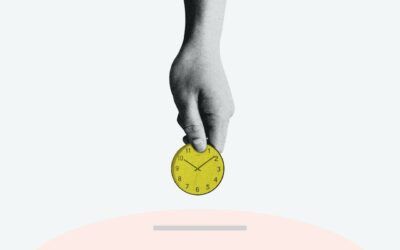Just do it.
The Nike tagline is symbolic of the American ethos. Go after it, try your hardest, and if you fail, get up, dust off, and try again.
I love the phrase. I have lived by it. It has served me well.
But, like many things, the idea is useful until it isn’t. Nowhere does this seem to be better illustrated than my previous struggles with meditation. Several years ago, when I started meditating, “I” was very focused on my breath as an object of meditation. I sat for 45 min each day, trying to focus on my breath at the tip of my nose like a dog protecting a bone.
If I could tally up the amount of time that I was actually able to stay focused on the breath I would estimate that, on a good day, a really good day, I might get a measly 5 minutes total. The rest of the time I was swept up in thought. Not just swept up but fully engaged with the multiple B-roll movie clips playing in my head.
This was, in and of itself, very illuminating. I met my mind and saw how out of control it was and how easy it was for that “I” that was meditating, the “I” that seems to be sitting inside my head, to get swept away by what the psychiatrist Judson Brewer calls the zombie thought apocalypse.
To mitigate the sense of failure I routinely felt from not being able to stay focused on my breath I tried to look at meditating like lifting weights — each time I managed to pay attention to my breath, even if just for a few seconds, I likened it to having just completed a repetition. This paradigm helped some, but since I always got so few reps in, my mental workout seemed pretty lame.
That all changed when I started using the Waking Up meditation app of Sam Harris. His approach is based on the following construct:
1. Consciousness is the open platform or stage on which everything takes place in our minds.
2. Every sensation and thought are just appearances in the space of consciousness.
3. The feeling that there is an “I” sitting inside our heads trying to meditate is just another appearance in consciousness. There is no “I” inside our heads talking to us.
By realizing that there is no actual “I”, the duality of a meditator and the object of meditation melts away. Bingo.
The “I” that we all so powerfully feel as being present in our heads arises, in part, as a component of the Default Mode Network (DMN). The DMN helps create the experiential sense of self, and it does this in a part of the brain called the posterior cingulate cortex (PCC).
The PCC gets activated when we take something personally, when we regret something in the past, when we worry about the future, or when we ruminate about things. It is the part of the brain that is revved up when I am swept up in thought while I am meditating.
Dr. Judson Brewer and colleagues have also shown that the PCC is activated not only when we think about ourselves but also with social cognitive processing (eg. mentalizing, judgments, moral issues), with distraction or disruption of attention, and when we crave something, like chocolate.
Here is the kicker. The PCC is deactivated by present-centered awareness or attention. What this means for meditation is that the more effortful you are in trying to focus on the breath, the more the PCC activates. The more relaxed, uncontrolling, and simply observing you are in allowing the breath or any other sensation to just be present as an appearance in consciousness, the more the PCC deactivates.
Bottom line: by taking the focus off trying to pay attention to the breath or any other object of meditation, you take the focus off yourself by decreasing PCC activation. By being aware of the fact that everything we experience are just appearances in consciousness, and then, in the moment at anytime during the day, being able to realize this, gives us a real world tool to consciously decrease the relentless activation of our PCC.
And freedom from ruminating, thinking about the past, the future, or ourselves, can be a good thing.




My experience with meditation has been very similar to Michael’s. I tried, with varying degrees of success, to meditate – for about 30 years. In reality, my efforts were pretty episodic. I consistently became frustrated with the minimal amount of actual meditation time that I was able to accomplish. Thanks to MIchael‘s blog, I tried the Waking Up app and it has truly been a game changer for me. I find it particularly helpful to think of my meditation time, per Sam‘s guidance, as “contemplation time.“ My goal is not to do anything other than to be quiet and observe.
Thanks to Michael for making me aware of Sam Harrisapp and for Michael’s ongoing observations.
Thanks Richard, most appreciated! Sam Harris’s app changed my life, no exaggeration.